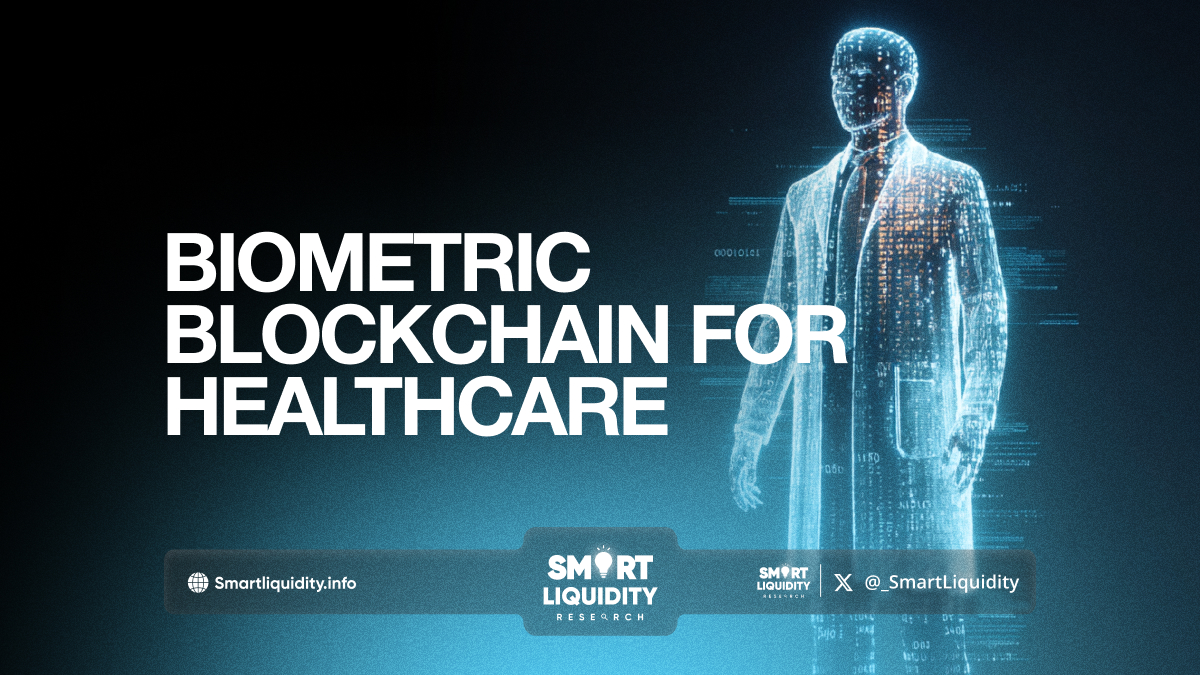Biometric Blockchain for Healthcare


Healthcare’s digital transformation has surged, highlighting data security, interoperability, and identity management as key challenges. A promising solution is Biometric Blockchain, which integrates biometric tech with blockchain to secure patient data, enable password-free identity verification, and improve service access while ensuring privacy compliance.
Understanding Biometric Blockchain
At its core, biometric blockchain refers to the fusion of biometric authentication systems—like fingerprint scanning, facial recognition, or voice identification—with blockchain networks, known for their decentralization, transparency, and immutability.
In this architecture:
- Biometric inputs provide a unique and unforgeable identity signature for each individual.
- Blockchain systems ensure that data is stored immutably, securely, and in a distributed manner.
When a patient registers with a healthcare provider, their biometric signature can be converted into a cryptographic hash that is either stored on-chain or linked to off-chain encrypted data. Accessing health records, making insurance claims, or verifying prescriptions could then be gated through biometric scans rather than usernames or passwords.
This eliminates many security risks associated with traditional login credentials and protects against identity fraud in an increasingly digitized healthcare ecosystem.
Use Cases in Healthcare
Biometric blockchain is not just theoretical—it is already being explored in various parts of the healthcare industry. Here are some of the leading use cases:
a) Secure Electronic Health Records (EHR) Access
Patients often struggle to access their medical records across multiple providers. Blockchain can maintain an immutable ledger of medical history, while biometric authentication allows patients to access or share their data easily—anytime, anywhere.
b) Telemedicine Identity Verification
With the explosion of telemedicine, verifying user identity remotely has become more important than ever. Biometric authentication, such as face or voice scans during video calls, can ensure that both doctor and patient are who they claim to be—enhancing trust and preventing medical fraud.
c) Clinical Trial Data Integrity
In clinical research, it’s vital to ensure the identity of participants and the accuracy of collected data. A biometric blockchain can confirm the authenticity of participants and secure the data trail from enrollment to outcomes, reducing fraudulent behavior and improving research quality.
d) Pharmaceutical Supply Chain Security
Tracking the movement of pharmaceuticals across the supply chain is another area where blockchain shines. Adding biometric checkpoints for authorized handlers (like pharmacists or inspectors) adds another layer of security, ensuring that only verified individuals manage sensitive inventory.
e) Medical IoT Integration
As wearables and medical IoT devices proliferate, the ability to tie biometric identity to health monitoring devices and log data immutably on-chain creates new opportunities for real-time, trusted health insights.
Key Benefits of Biometric Blockchain in Healthcare
The combination of blockchain’s decentralized infrastructure with biometric authentication yields a set of benefits that are particularly well-suited to the healthcare domain.
Feature | Blockchain Contribution | Biometric Contribution | Combined Benefit |
Identity Authentication | Decentralized IDs | Unique biological signatures | Fraud-proof patient verification |
Data Security | Immutable records | Restricts access to verified users | Strong defense against hacking |
Interoperability | Permissioned or public ledger sharing | Device-agnostic scanning | Seamless record access across institutions |
Patient Empowerment | Self-sovereign identity | Easy and quick logins | Patients control their data access |
Cost Reduction | Fewer intermediaries | No passwords or tokens needed | Low admin overhead and IT burden |
These benefits help create a more transparent, efficient, and resilient healthcare infrastructure, especially in regions where patient identity is hard to verify or infrastructure is fragmented.
Challenges and Ethical Considerations
Despite its potential, biometric blockchain in healthcare faces several technical, ethical, and legal challenges that must be addressed before mainstream adoption.
a) Storage and Hashing of Biometric Data
Storing raw biometric data directly on the blockchain is discouraged due to the permanence and public nature of most blockchains. Instead, biometric data is typically hashed and stored off-chain, with the blockchain serving as a secure pointer. However, even these hashes can present security concerns if not handled with proper encryption protocols.
b) Privacy Regulations and Data Ownership
Biometric data is classified as sensitive personal information under laws like the GDPR and HIPAA. Patients must give informed consent for its collection and usage, and the right to erasure—fundamental to GDPR—can be difficult to implement on immutable ledgers.
c) Accuracy and Inclusivity of Biometrics
Biometric systems aren’t infallible. False rejections (false negatives) and false acceptances (false positives) can hinder access to care. Moreover, certain groups—like elderly patients or manual laborers—might have biometric markers that degrade or are difficult to scan reliably.
d) Legacy System Compatibility
Healthcare IT systems are often fragmented and outdated. Integrating blockchain requires not only technical upgrades but also stakeholder education, interoperability standards, and vendor cooperation.
Global Implementations and Pilots
Innovative organizations around the world are already demonstrating the value of biometric blockchain in healthcare:
- ID2020 + uPort: This partnership provides decentralized digital IDs using biometrics, targeting vulnerable populations like refugees with limited access to healthcare services.
- MIT’s MedRec: A blockchain-based EHR system where patients can manage access to their data via biometric login methods.
- AID:Tech: Combines biometrics with blockchain to deliver humanitarian aid, track maternal health, and ensure transparency in healthcare delivery.
- Zamna: Though initially used for airline security, its biometric-blockchain platform is being evaluated for health certification systems post-pandemic.
These examples reflect a growing interest across sectors—including governments, NGOs, and private providers—in leveraging this technology to ensure accountability, trust, and efficiency.
Building a Decentralized Health Identity
As biometric scanners become standard in smartphones, tablets, and even wearables, healthcare organizations can begin to integrate decentralized health identities (DIDs). In this model:
- Patients use biometric scans to unlock blockchain-linked health credentials.
- Smart contracts control who can access which parts of a record and for how long.
- Insurers, hospitals, and pharmacies become permissioned actors in a transparent, tamper-proof system.
This future not only enables cross-border medical treatment and personalized medicine but also reduces healthcare fraud, improves compliance, and empowers the individual.
However, achieving this future will require:
- Cross-sector collaboration (tech, health, law, and policy)
- Open standards and interoperability frameworks
- Public education around rights and data usage
- Rigorous ethical review to avoid algorithmic bias or digital exclusion
Conclusion
Biometric blockchain is more than a technological novelty—it is a strategic response to the core issues plaguing modern healthcare: fragmented records, identity theft, access inequities, and trust deficits.
By anchoring data access to something as personal and unique as a fingerprint or iris scan—while storing that access on a secure, transparent ledger—biometric blockchain holds the promise of a patient-first, borderless healthcare ecosystem.
Though the path to adoption is complex, the benefits in terms of data sovereignty, security, and system resilience are profound. For forward-thinking healthcare leaders, biometric blockchain is not just a solution—it is the future.




